-
ConsAsia
Information - Speakers
- Program
- Call for Abstracts
-
AOFCD
Membership - Registration
-
Accommodation
& Tour -
Sponsorship
& Exhibition
- D-day
- Today 2025.12.07 D 2221
- ConsAsia 2019
- The lnaugural Meeting of the Asian and Oceanian Federation of Conservative Dentistry (AOFCD)
- November 8(Fri) - 10(Sun), 2019
- Important Due Dates :
-
- Abstract Submission Opens [March 01(Fri), 2019]
- Abstract Submission Ends [May 31(Fri), 2019]
- Acceptance Notification [June 28(Fri), 2019]
Country Representative Speakers
- Page Path
-

- Speakers
- Country Representative Speakers
Country Representative Speakers
-
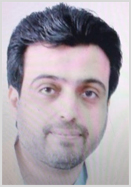 Abdulla Alsharif
President of Saudi Endodontic Society
Abdulla Alsharif
President of Saudi Endodontic Society
Saudi Arabia - Endodontic Surgery; Procedure or Decision? More
- New approach of decision and procedures of endodontic surgery with clinical examples will be covered.
-
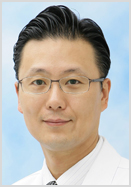 Baek Il Kim
Preventive dentistry &Public oral health
Baek Il Kim
Preventive dentistry &Public oral health
Yonsei University College of Dentistry
Korea -
Clinical Implication of Optical Fluorescence Technology in Dentistry
More - The optical fluorescence technology is commonly used in the biological field for the detection of specific target cells. The main cause of dental caries and periodontal disease is dental biofilm which is formed by various oral microorganisms. Therefore, it would be possible to detect dental biofilm by fluorescence changes using optical properties of oral microorganisms. The quantitative light-induced fluorescence (QLF) is the representative optical technology to use the difference in fluorescence from oral environment. QLF technology is the quantitative visible blue light induced fluorescence system which can capture changes in mineral contents from teeth and bacterial porphyrin induced red fluorescence at high resolution. During the growth phase of the dental biofilm, secondary colonizer bacteria produce a unique bacterial metabolite called porphyrin. These porphyrin-containing biofilms manifest as red QLF, and the fluorescence intensity is significantly correlated with various variables related to dental caries. The red fluorescent biofilm detected using QLF is a mature plaque existing on the tooth surface that has been present for at least 3 days. This optical fluorescence technology can extend not only dental caries but also tooth crack detection. In this presentation, the various clinical applications of this optical fluorescence technology in the dentistry will be introduced.
-
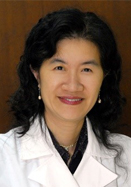 Min-Huey Chen
Esthetic Restoration
Min-Huey Chen
Esthetic Restoration
Graduate Institute of Clinical Dentistry,
School of Dentistry, National Taiwan University
Taiwan - Oral Rehabilitation of Vertical Dimension Loss More
- Alteration of vertical dimension are quite common problems in many dental clinics. In this presentation we are going to consider the following questions. How vertical dimension should be established? Whether it can be modified? What outcome will be if it is modified incorrectly? There are several correct answers to the same problem. We should understand occlusal vertical dimension and the related factors. There are three parts need to be considered including the growth of the ramus, the gonial angle of the mandible and the eruption of the teeth. Most common reasons for patients asking for clinical alteration of vertical dimension are to improve esthetics by altering facial form and/or tooth and gingival display, to improve occlusal relationships, such as correcting anterior open bites and to gain space for the restoration of short or worn teeth. During clinical alteration of vertical dimension, there are some points need to be concerned including the effects on the temporal mandibular joint, muscle pain, stability of altered vertical dimensions, impact on muscle activity levels and effects on speech. There are different methods for determing a new vertical dimension including using freeway space, trial appliances, transcutaneous electrical neural stimulation, measurements using the cementum- enamel junction (CEJ) and the method of facial proportion. Some clinical cases of full mouth oral rehabilitation of patient suffered from vertical dimension loss were also demonstrated.
-
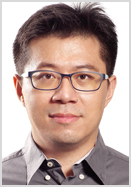 Fa-Jen Wang
National Taiwan University and National Taiwan University Hospital
Fa-Jen Wang
National Taiwan University and National Taiwan University Hospital
Taiwan - Another Look at Composite Resin-Unlocking Potential of Composite Resin, 5 years f/u More
- Thanks to advances in restorative material and adhesive techniques, several treatment options are currently available to restore anterior teeth that are not harmonious in color, shape, or size, or that have a diastema.
-
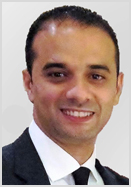 Hatem M. El-Damanhoury
University of Sharjah
Hatem M. El-Damanhoury
University of Sharjah
United Arab Emirates - Post-Endodontic Restoration; a Paradigm Shift in Concepts and Techniques More
- Restoration of endodontically treated teeth continues to be a challenge in restorative dentistry. A common protocol for restoring such teeth has been to use a post and core to aid the retention of an overlying crown. However, many clinical and laboratory studies have reported that placing a post will contribute to the retention of the core portion of the restoration but may have a weakening effect on the root. Failure of post & core/ crown systems is a common problem that may be due to different material mechanical behaviors relative to tooth structure in response to intra-oral cyclic stresses. With the increasing popularity of adhesive dentistry, a shift in treatment decisions towards more conservative modalities has been observed. With the current advances in Adhesive dentistry and the development of Dental CAD/CAM, custom-made fiber post and core, Ceramic inlays, onlays, and endocrowns became better alternatives. This presentation discusses these approaches, its advantages and limitations when compared to conventional treatment options.
-
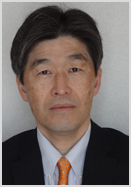 Hiromichi Yumoto
Tokushima University
Hiromichi Yumoto
Tokushima University
Japan -
Clinical Technique in Endodontics
More - Debridement and disinfection within the root canal system are the most important points in endodontic treatment. However, it is quite difficult to completely remove bacteria and all causal agents from the root canal system as well as bacterial biofilms formed in the extraradicular area because of the anatomical and morphological complexities. Therefore, it is necessary to develop new methods of bacterial control and I would like to present a novel non-surgical treatment for refractory periapical periodontitis.
-
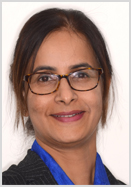 Jayshree Hegde Anil
Ridgetop Dental International
Jayshree Hegde Anil
Ridgetop Dental International
India -
Establishing Vertical Dimension in Full Mouth Rehabilitation
More - Clinical considerations in determination of vertical dimensions in Full mouth rehabilitation Key factors in determination of vertical dimension of occlusion in worn dentition Abstract: Loss of vertical dimension is a common sequelae of worn dentition. Establishing vertical dimension of occlusion is a critical step during full mouth rehabilitation. The re-established vertical dimension is a permanent change and it should create a harmonious relationship between teeth, periodontium, muscle and the TMJ. So it is important to follow the right technique prior to placement of permanent restorations, to prevent any damage to the masticatory system. This lecture discusses the clinical considerations and techniques for increasing the vertical dimension of occlusion
-
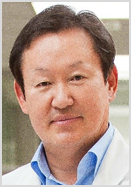 Kyoung Kyu Choi
Conservative Dentistry
Kyoung Kyu Choi
Conservative Dentistry
Kyunghee University
Korea -
Adequate Surface Treatment of Ceramic and Composite Restorations
More - Tooth-colored restorations are widely used because of their durability, esthetics, and excellent biocompatibility. Recently, CAD/CAMs are popular among the advances in dental technology, used for the fabrication of ceramic and composite restorations. The optimal surface condition should be established to make mechanical and chemical stability. However, there are many reasons to decrease the bonding durability of these restorations resulting in failure in clinical practice. In this lecture, we can review the adequate conditioning methods of indirect restoration including zirconia ceramics and examine the influence of saliva contamination before and after try-in and cleaning methods in bonding procedures of each restoratives. We may find out the answers when and how to do the surface treatment of various indirect restorations, so that you can get a confidence through organizing procedures and concepts for tooth-colored indirection.
-
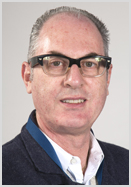 Michael Burrow
University of Hong Kong/University of Melbourne
Michael Burrow
University of Hong Kong/University of Melbourne
Australia - The Evidence and Potential Viability for Using Glass ionomer in Load Bearing Restorations More
- Glass ionomer cements (GICs) have typically been used to restore small carious lesions in incisors or the cervical region of teeth. Recently, GICs have undergone several modifications that have resulted in increased strength and wear resistance. These GICs have typically been used for ART restorations where dental facilities and basic water and power supply may be limited. However, with the introduction of these newer materials and resin coating methods, manufacturers have begun to promote the wider use of GICs for load bearing restorations in posterior teeth in a conventional clinical scenario. This talk will review the current clinical evidence with regard to where and how current GICs might be used for restoring carious lesions in posterior teeth in a load bearing situation in adult patients.
-
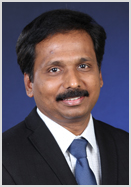 Mohan Bhuvaneswaran
Vignesh Dental Hospital
Mohan Bhuvaneswaran
Vignesh Dental Hospital
India -
Achieving Ultimate Esthetics with Composite Resin
More - The direct bonded restorations open up the avenues of conserving the tooth structure to the maximum extent possible. The current concepts in bonding and the best way to handle the present generation of composite in creating beautiful smiles will be discussed.
-
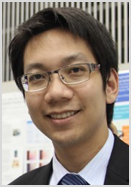 Pipop Saikaew
Mahidol University
Pipop Saikaew
Mahidol University
Thailand -
Self-Etching Adhesives and Bonding Modification
More - Adhesive system can be divided into 2 strategies: smear layer removal (etch-and-rinse) and smear layer modification (self-etch). Smear layer is completely removed by phosphoric acid in etch-and-rinse system. On the other hand, due to the weak acidity of the self-etching system, smear layer is partially dissolved by acidic monomer. The residual smear layer is subsequently incorporated into the hybrid layer. There was a concern that smear layer might affect the penetration of self-etching adhesive to underlying dentin, especially mild self-etching adhesives. However, previous studies demonstrated the controversial results about this issue. In addition, characteristics of smear layer may vary according to the instrument used for surface preparation and lead to the different outcome when bonded to self-etching system. Therefore, this lecture will explain the effect of smear layer on bonding performance of self-etching adhesives based on the different surface preparation techniques, the characteristics and the reactions of smear layer to various etchants and bonding modification techniques to improve the effectiveness of self-etching adhesives.
-
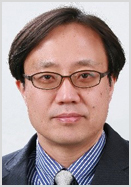 Sung-ho Park
Yonsei University, College of Dentistry
Sung-ho Park
Yonsei University, College of Dentistry
Korea -
Cementation Tips for CAD/CAM Tooth Colored Restoration
More - It is true that CAD/CAM technique let dentists make indirect tooth colored restoration more easily and conveniently, but internal and marginal adaptation of CAD/CAM restoration is less favorable than traditional indirect tooth colored restorations. Proper cementation techniques have become more important for successful CAM/CAM restoration. In this resentations, clinical tips for cementation of CAD/CAM restoration will be provided.
-
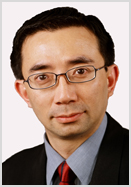 Tan Hee Hon
National University of Singapore
Tan Hee Hon
National University of Singapore
Singapore - Pain and Dentistry – Orofacial Pain? or More than Restorative Dentistry for Our Patients More
- Diagnosis and management of Acute and Chronic Pain is part of Dentistry. Pain has been puzzling to Dental or Medical Healthcare Providers, and sometimes Pain can pose challenges in the management of patients. We often come across patients who have Acute or Chronic Pain, Temporomandibular Disorders, Orofacial Pain or Chronic Overlapping Pain Conditions, this presentation focuses on the interactive factors in explaining and diagnosing Chronic Orofacial Pain/ Temporomandibular Disorders and Mechanism of Pain. We can all help in the management of patients who are in “Pain”.
-
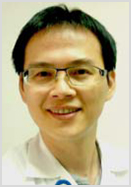 Yu-Chih Chiang
National Taiwan University
Yu-Chih Chiang
National Taiwan University
Taiwan - "Cutting Edge in Conservative Dentistry" (New technologies): Can Fiber Posts Be Luted with Light‐Initiated Composite Resin? More
- Fiber posts are commonly used to restore endodontically treated teeth when their remaining coronal tissue can no longer provide adequate retention or resistance for the restoration. They are passively retained inside the root canals with dual cured resin‐based luting cements. However, bonding and mechanical strength of dual cured resin cement is not so reliable compare to light‐initiate composite resin. In addition, light penetration decrease from the coronal part to the apical part of the root canal space; inadequate polymerization of light‐activated resins was recorded at deeper levels of the post space. A significant reduction in light intensity occurs when the light scattering within the resin cement and shadowing produced by both tooth structure and fiber post. Even luting with dual cured resin cement, the degree of conversion decreased apparently along the depth of root canal consequently, much less luting with light‐initiated composite resin. The present study investigated light‐transmitting ability through the newly developed esthetic post systems. A light curing flowable composite resin was used to bond the test posts. By contrast, the fiber optical post can transduce highest light intensity and achieve promising degree of conversion of resin cement in deeper part. Based on our findings, we will also talk about some applications in clinical cases.
-
 Anthony Tsai
National Taiwan University Hospital
Anthony Tsai
National Taiwan University Hospital
Taipei Veterans General Hospital and Taipei Wanfang Hospital
Taiwan - An Appraisal of the Start of a Caries Lesion More
- The fundamental understanding of how a caries lesion may start will affect many aspects in managing the caries disease. The presentation will focus on the sequence of conditions to start a caries lesion. There are limitations of current practice of caries risk assessment. Silver diamine fluoride may have a role in these areas.
-
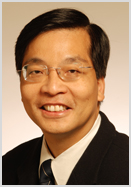 Chun Hung Chu
University of Hong Kong
Chun Hung Chu
University of Hong Kong
Hong Kong -
Improve Aesthetics by Closing the Midline Diastema
More - A maxillary midline diastema (MMD) often is an aesthetic complaint of patients in our clinic practice. Although an MMD can be transient in mixed dentition stage and, therefore, requires no intervention for children, treatment of MMDs in the permanent dentition of adults requires a detailed examination and appropriate care. This presentation will discuss management of MMD using five clinical cases in adults to illustrate the available restorative and orthodontic options. Successful treatment requires an accurate diagnosis and intervention which is agreed by the patient. While some patients with MMD should be referred to orthodontist for management, general dentists can play a significant role to address patient aesthetic concern on MMD and perform a range of restorative and orthodontic treatments in appropriate clinical situations.
-
 Emre Nagas
Hacettepe University
Emre Nagas
Hacettepe University
Turkey -
Biomimetic Endodontics
More - This topic attempts to provide a better understanding of the relative position of the biomimetic endodontics in the context of the past and present endodontic approaches.
-
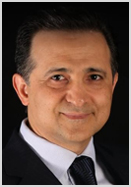 Hassan Eslami
School of Dentistry, Shahid Beheshti University of Medical Sciences, Tehran
Hassan Eslami
School of Dentistry, Shahid Beheshti University of Medical Sciences, Tehran
Iran -
Conservative and Ultraconservative Ceramic Laminate Veneers
More - For many years, dental ceramic veneers and especially porcelain veneers have been utilized to improve the aesthetic of patients` teeth. But with the increase in patients` concerns about the preparation of healthy tooth structure, especially enamel, they consider these treatments equivalent to the loss of their teeth. For this reason, patients show tendency to direct composite veneers more than before, which in general may have a shorter durability and less aesthetic at least in a long period of time. This is while significant cases with unpleasant smile can be treated with ceramic veneers from a minimal preparation to no preparation. Undoubtedly, both dentist and dental ceramist should be highly skilled in their professions. In this presentation, as a restorative dentist and a dental ceramist I will discuss the considered criteria through clinical cases that have been treated during last decade.
-
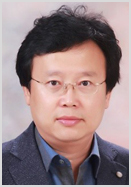 In-Bog Lee
Seoul National University
In-Bog Lee
Seoul National University
Korea - DIY Instrumentations for Biomechanical Research in Conservative Dentistry More
- Biomechanics is defined as the application of engineering principles to biological systems. In dental composite restoration, the biomechanical factors include the rheology of composite prior to cure, change in dimension and modulus of the materials during curing, polymerization shrinkage stress at bonded tooth-composite interface, cusp flexure of tooth, and the hydrodynamics of dentinal fluid flow between the cavity base and pulp. To investigate the biomechanical phenomenon, we should measure physical parameters such as length, force, mass, temperature, light intensity. In many cases, commercially available instruments could be used. However, researchers sometimes cannot not find any adequate device for a special experiment. Most measurement instruments consists of transducers (sensor and actuator), amplifier and filter, an analog to digital converter to store data on a computer. To date, there are many open source hardware and software platforms that can be used to build your own instruments. This presentation will show some DIY style instruments made in my laboratory for biomechanical research using an open source microcontroller (Arduino) and a free programming platform (Processing), and to verify the usability of those instruments with published data.
-
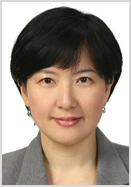 Juhea Chang
Special Care Clinic
Juhea Chang
Special Care Clinic
Seoul National University
Dental Hospital
Korea -
How to Approach to Treatment of Root Surface Caries in Elderly Patients with Special Needs
More -
An increased severity and activity of caries lesions in the root surface are often found in elderly patients. Exposure of the root surface by gingival recession and a decreased salivary flow by multiple medication induce a high risk of caries development. Moreover, many elderly patients with special needs poorly manage their oral hygiene due to a lack of motivation and impaired physical dexterity. Consequently, they often exhibit quick development of rampant root surface caries, resulting in multiple loss of the involved teeth unavoidable. In this lecture we will discuss about the considerations posed for caries-prone elderly patients. And, clinical cases of root caries will be reviewed according to the severity of the caries evelopment in the mild, moderate and severe phases. The sequence of the restorative intervention needs to be applied with meticulous operative techniques and adequate material selection. Non-invasive and preventive treatment regimens are also essential to enhance the caries-resistance of elderly patients. Active collaboration between patients’ caregivers and dental healthcare personnel needs to be also implemented. Comprehensive clinical protocols of caries management will be beneficial to elderly patients who are at extremely high risk of developing root caries.
Acknowledgement
This academic presentation received support in the form of a grant from the National Research Foundation funded by the Ministry of Science and ICT of Korea (2018R1A2B6003847).
-
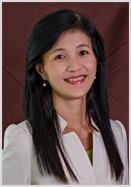 Liang Lin Seow
School of Dentistry
Liang Lin Seow
School of Dentistry
International Medical University
Malaysia -
Management of Caries- from Classroom to Real World
More - The International Caries Detection and Assessment System (ICDAS) is a clinical scoring system designed for use in dental education, clinical practice, research, and epidemiology. Together with other parameters eg. caries risk assessment, this provides a holistic approach in diagnosis and clinical management of caries. In Malaysia, all dental schools adopt ICDAS scoring system in the undergraduate dental programme. This presentation will provide insight into teaching cariology and caries management in the dental curriculum and relate it to clinical circumstances, including emphasis on personalized treatment plan to improve oral wellness of patients.
-
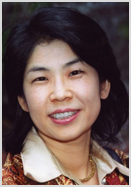 Mikako Hyashi
Osaka University Graduate School of Dentistry
Mikako Hyashi
Osaka University Graduate School of Dentistry
Japan - Japan’s Pioneering Guideline for Treating Caries Based on MI Policy More
- Japan has set the laudable goal of 80-20 meaning that at the age of 80, people would have at least 20 of their natural teeth. But to achieve this, dentistry needs to undergo a paradigm shift. Everyone involved, government and dentists particularly must enhance the concept of Minimal Intervention (MI). Experts from the Japanese Society of Conservative Dentistry in 2009 published a Guideline for evidence-based treatments of caries based on MI policy. This was followed in 2015 by an expanded version incorporating recommendations for remineralizing incipient enamel and root caries. The aim was to make drilling of healthy tooth a thing of the past. This will make it easier to keep healthy teeth longer as well as taking a lot of the pain out of dental treatments. This presentation will explain the latest scientific evidence, the best modern materials, the advanced clinical techniques that are combining with MI to make dentistry a key partner in helping patients lead longer healthier lives.
-
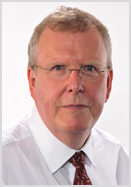 Paul Brunton
Univ. of Otago
Paul Brunton
Univ. of Otago
New Zealand -
Caries Risk Assessment
More - As part of clinical care its important to consider a caries risk assessment, the factors that inform such an assessment and how it should affect future treatment planning decisions. This presentation will consider this subject in some detail using clinical examples to support the protocols being advocated.
-
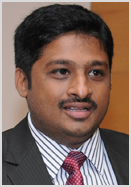 S. Sai Kalyan
Pravara Institute of Medical Sciences
S. Sai Kalyan
Pravara Institute of Medical Sciences
India - Regeneration in endodontics: Current trends and Future perspectives More
- The future of regenerative endodontics lies in overcoming the existing roadblocks and incorporating cutting edge technologies to improve the clinical and histological outcomes. The lecture outlines the current trends and lays emphasis on the future strategies for successful endodontic regeneration.
-
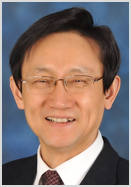 Luke Sung Kyo Kim
Kyungpook National University
Luke Sung Kyo Kim
Kyungpook National University
Korea - Calcium Silicate Cements, Updates and Summaries More
- Calcium silicate cement starting with mineral trioxide aggregate is commonly used in endodontic procedures involving root‐end filling, perforation repair, root canal sealer and pulp regeneration including pulp capping, pulpotomy, apexogenesis, and apexification. With the superior laboratory and clinical performance of MTA in comparison with previous endodontic repair cements, such as calcium hydroxide, many different products of calcium silicate cement have been developed with enhanced handling properties. The aim of the present presentation is to review and summarize the available old and recent literature on current calcium silicate cement products, and to give recommendations for the clinical use of these materials.
-
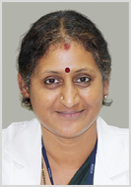 Usha Sathyanarayanan
Sri Balaji Vidyapeeth University
Usha Sathyanarayanan
Sri Balaji Vidyapeeth University
India -
Dental Caries – A global phenomenon in Indian Context
More - Dental caries disease has been a global burden since pre-historic times. Though a dramatic decline has been witnessed in the recent decades, it is still prevalent in certain countries. The philosophy of ‘eradicating the disease’, has been replaced by ‘life-time control’. This change is due to the current understanding of aetiopathogenesis and the strong role of socio-economic factors that influences the process and progress of the disease. Thus, despite being a global phenomenon, dental caries might be widely varying in the psycho-social, socio-cultural and socio-economic contexts, at the national/regional level. Though international guidelines have been proposed for cares management at population level, patient level, and lesion level, they must be extensively adapted to the uniqueness of the regional contexts. India being a country of diversity in all aspects and caries being a life-style disease, significant variations are inevitable in the disease presentation and perception of prevention. This presentation attempts to project the Indian challenges and variations, in terms of prevalence, education, patient service and clinical research in dental caries.
-
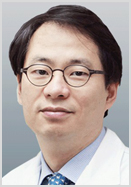 Won-Jun Shon
Seoul National University
Won-Jun Shon
Seoul National University
Korea -
Dentin-Pulp Regeneration Concept: How Can We Translate to Clinical Practice?
More - The regeneration of the pulp-dentin complex has been reported in several animal studies using exogenous biological cues or stem/ progenitor cells. The animal and human studies using endogenous biological molecules released from ethylenediaminetetraacetic acid-conditioned dentin or evoked bleeding have shown the formation of tissues that are of periodontal origin. Endogenous biological molecules have a release profile with a high initial burst followed by rapid reduction, perhaps accounting for the lack of regeneration in clinical studies. We investigated biological function and mechanisms of Cpne7 in regulation of dental and non-dental mesenchymal cell differentiation into odontoblasts via epithelial mesenchymal interaction. Cpne7 induces the differentiation of dental mesenchymal cells, such as human dental pulp cell (hDPCs) or non-dental origin mesenchymal cells, into odontoblasts and dentin formation in vivo. This presentation introduce the potential roles of Cpne7 in vital pulp therapy ( direct pulp capping, indirect pulp capping, hypersensitivity tx. ) and regenerative endodontic procedure through animal study. If we fully understand about Cpne 7 function and reactive mechanism, clinicians can induce artificially tertiary dentin that produced by such as caries, abfraction, or dental treatment to protect pulp tissue naturally.
